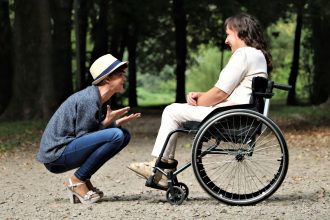Regaining independence is one of the main goals of brain injury recovery. For many survivors, this means returning to driving, playing sports, or resuming favorite activities. Yet these decisions are not simple. Driving and high-risk activities require rapid thinking, coordination, and judgment—skills that may be temporarily or permanently affected by brain injury.
Understanding the restrictions, evaluations, and safety guidelines that follow brain injury helps survivors and families make informed choices about when and how to resume these parts of life.
Driving After Brain Injury
Driving represents freedom, but it also demands quick reflexes, attention, and clear vision. After a brain injury, these abilities may be impaired. Survivors may struggle with slowed reaction times, blurred vision, or difficulty judging distance. Cognitive changes such as memory lapses or poor concentration can increase the risk of accidents. Emotional changes, including impulsivity or irritability, may also interfere with safe driving.
Most doctors recommend avoiding driving immediately after an injury, regardless of severity. Medical clearance is required before returning to the road. This may involve a detailed neurological exam, a vision assessment, and sometimes a specialized driving evaluation. These evaluations test a survivor’s ability to react in real-world traffic scenarios, often using simulators or on-the-road assessments with occupational therapists trained in driver rehabilitation.
When driving is no longer safe, survivors may turn to alternatives such as ride services, community transportation programs, or vehicle modifications. For some, adaptive driving equipment such as hand controls or steering aids make it possible to regain independence safely.
Sports and Physical Activity
Sports are a common source of brain injury, particularly concussions. Returning to athletics after a brain injury requires careful planning, as another injury before the brain has healed can have devastating consequences. This is especially true in contact sports such as football, hockey, soccer, or boxing, where repeated head impacts increase the risk of chronic traumatic encephalopathy (CTE).
Athletes follow return-to-play protocols, which gradually reintroduce physical activity under medical supervision. These step-by-step programs move from light exercise to full competition only when symptoms have completely resolved. Even recreational athletes—those who run, cycle, or practice martial arts—should consult a doctor before resuming activity.
Some survivors may need to permanently avoid high-risk sports, choosing lower-impact activities such as swimming, yoga, or adaptive recreation. The goal is to encourage fitness and participation without exposing the brain to further harm.
Workplace and Daily Activities
Restrictions extend beyond driving and sports. Survivors may need to temporarily avoid activities that require heavy lifting, working at heights, or operating machinery. Fatigue, dizziness, or impaired judgment can increase the risk of injury in these settings. Even household tasks such as climbing ladders, using power tools, or cooking with sharp instruments may require temporary modifications until confidence and coordination return.
Occupational therapists often help assess readiness for daily tasks and recommend adaptive equipment or safety strategies.
Why Restrictions Matter
Restrictions are not meant to limit independence—they are designed to protect safety during recovery. A second injury, especially soon after the first, can worsen outcomes and prolong recovery. In some cases, such as severe traumatic brain injury or post-concussion syndrome, permanent restrictions may apply.
Families sometimes struggle with enforcing these limits, especially when a survivor feels ready before doctors give clearance. Education and open communication are essential so that survivors understand that restrictions are temporary steps toward long-term independence.
Finding New Paths
When certain activities are no longer safe, survivors often discover new ways to stay engaged and active. Adaptive sports programs, community recreation centers, and peer groups offer opportunities for fitness and social connection without the risks of high-impact activities. Exploring new hobbies, from art to gardening, can also provide meaningful outlets for recovery.
Conclusion
Driving, sports, and activity restrictions are important safeguards after brain injury. They protect survivors during a vulnerable period and help ensure that recovery is not set back by further injury. With medical clearance, rehabilitation, and sometimes adaptive equipment, many survivors successfully return to these activities. For others, new forms of recreation and transportation open doors to independence in different but equally fulfilling ways.
Restrictions may feel frustrating, but they are part of the journey toward a safe and meaningful life after brain injury.







